Attractions · Ecuador · Going Out · Regions · South America
8 must-see highlights of Ecuador
Ecuador is a megadiverse country that offers not only the unique Galapagos Islands, but also a wide range of sites that travelers must-visit in the Andes, the Amazon, and the Pacific Coast. To entice potential visitors, we have chosen 8 highlights of Ecuador that travelers should include in their itinerary to Ecuador.
Information from the web shows everything from blog posts to itineraries for tours from the Andes, starting in Quito, to the Amazon rainforest, and then finishing on the Ecuadorian coast. There are many ways to explore the country; this post is provided to provide ideas about some sites visitors may want to experience. It is a way for travelers to see the Ecuadorian culture, customs, and way of life nowadays.
1. Otavalo
This small town is located on the north side of the country, very close to Quito (2 hours driving approx.).
Why visit Otavalo?
 Otavalo is the cultural capital of Ecuador due to its rich history and tradition. The fabrics and handcrafts created in Otavalo are renowned for quality beauty. This small village has the biggest indigenous market in South America, called Plaza de Ponchos. In this market, for decades, many artisans and artists come to offer their products, so it is easy to find the Paja Toquilla hats or Panama hats weaved in Cuenca, the ceramics of Cotacachi, the leather clothes from La Esperanza, and the handicrafts from the surrounding areas of Otavalo.
There is much more than the Plaza de Ponchos in Otavalo such as the San Pablo Lake, the Peguche waterfalls, and Condor´s Park. At San Pablo, the visitor can go kayaking, hike along the lake, take a boat ride, or even stay in one of the nearby lodges with the Imbabura volcano as a backdrop. In fact, during the Inti Raymi festivities for the Summer Solstice, the lake is where the cleaning rituals of the indigenous are practiced. The Peguche waterfall is 30 meters (98 ft) high that is ideal for relaxing or enjoying a pleasant swim in one of its nearby spring water pools. Condor´s Park is a rescue center for this endangered species and other predatory birds, in addition to a majestic 360 view.
Otavalo is the cultural capital of Ecuador due to its rich history and tradition. The fabrics and handcrafts created in Otavalo are renowned for quality beauty. This small village has the biggest indigenous market in South America, called Plaza de Ponchos. In this market, for decades, many artisans and artists come to offer their products, so it is easy to find the Paja Toquilla hats or Panama hats weaved in Cuenca, the ceramics of Cotacachi, the leather clothes from La Esperanza, and the handicrafts from the surrounding areas of Otavalo.
There is much more than the Plaza de Ponchos in Otavalo such as the San Pablo Lake, the Peguche waterfalls, and Condor´s Park. At San Pablo, the visitor can go kayaking, hike along the lake, take a boat ride, or even stay in one of the nearby lodges with the Imbabura volcano as a backdrop. In fact, during the Inti Raymi festivities for the Summer Solstice, the lake is where the cleaning rituals of the indigenous are practiced. The Peguche waterfall is 30 meters (98 ft) high that is ideal for relaxing or enjoying a pleasant swim in one of its nearby spring water pools. Condor´s Park is a rescue center for this endangered species and other predatory birds, in addition to a majestic 360 view.
 Without a doubt, Otavalo has a lot of potential for travelers that want to experience culture, nature, and adventure during their visit to Ecuador, and the best is that is only a few hours by car from the capital city of Quito.
2. Quitsato – Solar Clock
As many people know, the name Ecuador comes from the Equator that divides the world into two hemispheres (North and South). That´s why many tourists come every year to visit the Middle of the World monument, and the Intiñan Park, where the GPS mark the 0°0”0´. However, a 52 meters (171 ft) diameter solar clock mark not only the hour but also the solstices and equinoxes of the year.
Without a doubt, Otavalo has a lot of potential for travelers that want to experience culture, nature, and adventure during their visit to Ecuador, and the best is that is only a few hours by car from the capital city of Quito.
2. Quitsato – Solar Clock
As many people know, the name Ecuador comes from the Equator that divides the world into two hemispheres (North and South). That´s why many tourists come every year to visit the Middle of the World monument, and the Intiñan Park, where the GPS mark the 0°0”0´. However, a 52 meters (171 ft) diameter solar clock mark not only the hour but also the solstices and equinoxes of the year.
 At Quitsato, the traveler can have a cultural experience mixed with knowledge of astronomy and ancient traditions that helped the indigenous ancestors to understand how everything works in the celestial calendar. Visitors will have an interpretation of educational programs Oriens and Quitsato.
At Quitsato, the traveler can have a cultural experience mixed with knowledge of astronomy and ancient traditions that helped the indigenous ancestors to understand how everything works in the celestial calendar. Visitors will have an interpretation of educational programs Oriens and Quitsato.
 The Pachamanga, on the other hands, shows the traditional ways that natives prepared food in a volcanic stone under the earth. The meaning of Pacha is earth and Manga is pot. By cooking the food in this way, ancestors expressed its gratitude to the Pachamama (mother earth) for the food that was provided to them. The Pambamesa meal is served at floor level in order to feel the energy of mother earth which is a way to thank the Pachamama for the food. The meal is served in Atseras (leaves). Pambamesa looks forward to creating and sharing where “there is a real redistribution of wealth, equity and social equality.”
Quitsato is a mixture of knowledge, traditions, and energy connection with Pachamama or Mother Earth.
3. Quilotoa Crater
Quilotoa is a caldera formed after the eruption of a volcano that collapsed and subsequently filled the caldera with water. The crater has a diameter of 3 km (2 mi), and the caldera has accumulated water for centuries up to 250 m (820ft) deep.
The Pachamanga, on the other hands, shows the traditional ways that natives prepared food in a volcanic stone under the earth. The meaning of Pacha is earth and Manga is pot. By cooking the food in this way, ancestors expressed its gratitude to the Pachamama (mother earth) for the food that was provided to them. The Pambamesa meal is served at floor level in order to feel the energy of mother earth which is a way to thank the Pachamama for the food. The meal is served in Atseras (leaves). Pambamesa looks forward to creating and sharing where “there is a real redistribution of wealth, equity and social equality.”
Quitsato is a mixture of knowledge, traditions, and energy connection with Pachamama or Mother Earth.
3. Quilotoa Crater
Quilotoa is a caldera formed after the eruption of a volcano that collapsed and subsequently filled the caldera with water. The crater has a diameter of 3 km (2 mi), and the caldera has accumulated water for centuries up to 250 m (820ft) deep.
 The Quilotoa crater has gained relevant importance for the visitors in recent years due to its beauty. Its water has turned in green due to the high concentration of minerals, and there are fumaroles at the lake floor with some hot springs on the eastern side of the volcano.
Visitors can go down the winding path until they reach the shores of the lake, where it is possible to go kayaking or make the trek from 3 to 5 hours for the entire diameter of the crater. There are also lookouts where people can admire the beauty of this volcanic lake.
For those passengers looking forward to staying close to the Quilotoa crater, there is a possibility to stay in some basic hostels or lodges. One of the most preferred by the tourists is Shalala Lodge because of the lookout offering views of the lake.
The Quilotoa crater has gained relevant importance for the visitors in recent years due to its beauty. Its water has turned in green due to the high concentration of minerals, and there are fumaroles at the lake floor with some hot springs on the eastern side of the volcano.
Visitors can go down the winding path until they reach the shores of the lake, where it is possible to go kayaking or make the trek from 3 to 5 hours for the entire diameter of the crater. There are also lookouts where people can admire the beauty of this volcanic lake.
For those passengers looking forward to staying close to the Quilotoa crater, there is a possibility to stay in some basic hostels or lodges. One of the most preferred by the tourists is Shalala Lodge because of the lookout offering views of the lake.
 4. Chimborazo Volcano
The Chimborazo volcano is the highest volcano in Ecuador with 6263 m (20549.44 ft), and is currently inactive. 20 km away of the volcano, it is the city of Riobamba, which is the capital of the Chimborazo province.
4. Chimborazo Volcano
The Chimborazo volcano is the highest volcano in Ecuador with 6263 m (20549.44 ft), and is currently inactive. 20 km away of the volcano, it is the city of Riobamba, which is the capital of the Chimborazo province.
 In this area, it is possible to stay in some of the traditional haciendas such as Hacienda Abraspungo or Hacienda la Andaluza. For those travelers looking forward to climbing at the Chimborazo volcano, the best option is the Chimborazo Lodge.
One of the ways to let the Chimborazo enchant travelers is by taking the train route of Tren del Hielo I, which departs from Riobamba to Urbina and La Moya. It is a day tour that is very worthwhile. There is a train route offered at the foothills of the volcano and visitors will have the opportunity to meet the last Ice Trader from the Chimborazo glacier.
Trading Ice from the glaciers of the volcanoes was a very common practice among locals which has been slowly disappearing in the last decades. Men used to climb up to the glaciers of the volcanoes to bring ice to the nearby cities, even as far as to the coastal area. Every Tuesday and Fridays these ice traders cut the pieces of ice from the glacier and transported by mule to the towns to sell it in the markets. People made ice cream (helados de paila) or cold juices with this pure ice. Nowadays, there is only one person remaining who proudly continues this tradition. His name is Baltazar Ushca, and the only way to meet him and learn about this unconventional and risky labor is by taking the Tren del Hielo I, that goes from Riobamba to La Urbina and La Moya. He is very excited to share his legacy with visitors coming on the train. Unfortunately, this legacy will probably die with him.
In this area, it is possible to stay in some of the traditional haciendas such as Hacienda Abraspungo or Hacienda la Andaluza. For those travelers looking forward to climbing at the Chimborazo volcano, the best option is the Chimborazo Lodge.
One of the ways to let the Chimborazo enchant travelers is by taking the train route of Tren del Hielo I, which departs from Riobamba to Urbina and La Moya. It is a day tour that is very worthwhile. There is a train route offered at the foothills of the volcano and visitors will have the opportunity to meet the last Ice Trader from the Chimborazo glacier.
Trading Ice from the glaciers of the volcanoes was a very common practice among locals which has been slowly disappearing in the last decades. Men used to climb up to the glaciers of the volcanoes to bring ice to the nearby cities, even as far as to the coastal area. Every Tuesday and Fridays these ice traders cut the pieces of ice from the glacier and transported by mule to the towns to sell it in the markets. People made ice cream (helados de paila) or cold juices with this pure ice. Nowadays, there is only one person remaining who proudly continues this tradition. His name is Baltazar Ushca, and the only way to meet him and learn about this unconventional and risky labor is by taking the Tren del Hielo I, that goes from Riobamba to La Urbina and La Moya. He is very excited to share his legacy with visitors coming on the train. Unfortunately, this legacy will probably die with him.
 In addition to the train route and the ice trader, Riobamba and the Chimborazo region offer visitors the biodiversity and breathtaking landscapes of the highlands of the Southern Andes. The Fauna Reserve of Chimborazo, which forms a protected ecosystem to preserve the habitat of the native wildlife of the Andes, such as the vicuña, the llama and the alpaca. In this reservoir, visitors can hike paths to enjoy the Andean natural sites.
5. Alausi – Devil’s Nose Train
Ecuador during the “age of steel” faced the challenge of building a railroad to connect the coast and port city of Guayaquil with the Andean capital. The most challenging section for the engineers was the path to the narrow mount Pistishi or Condor Puñuna which means where the condor sleeps. Here, the train tracks had to be built around walls of stone and big cliffs. Seen from above, the mountain looks like a nose, and the devil connotation comes from a large number of deaths suffered by the construction crews in this difficult project.
In addition to the train route and the ice trader, Riobamba and the Chimborazo region offer visitors the biodiversity and breathtaking landscapes of the highlands of the Southern Andes. The Fauna Reserve of Chimborazo, which forms a protected ecosystem to preserve the habitat of the native wildlife of the Andes, such as the vicuña, the llama and the alpaca. In this reservoir, visitors can hike paths to enjoy the Andean natural sites.
5. Alausi – Devil’s Nose Train
Ecuador during the “age of steel” faced the challenge of building a railroad to connect the coast and port city of Guayaquil with the Andean capital. The most challenging section for the engineers was the path to the narrow mount Pistishi or Condor Puñuna which means where the condor sleeps. Here, the train tracks had to be built around walls of stone and big cliffs. Seen from above, the mountain looks like a nose, and the devil connotation comes from a large number of deaths suffered by the construction crews in this difficult project.
 The train journey connecting the communities of Alausi and Sibambe, is approximately 12,5 km (7.77 mi) long where the train climbs the mountain approximately 500 m. The engineering feat comes in the narrow path where the train has many switchbacks to be able to climb the steep track. The zig-zag track enables the train to ascend and descend safely and provides a fun trip for guests.
Apart from the engineering wonder, and the tragic history behind the railroad, nowadays the series of train journeys are developing a sustainable tourism system based on authentic and meaningful experiences for visitors. This means that taking the Devil´s Nose day tour, passengers will be able to also connect with local people, learn about their culture and their traditions. Meanwhile, this activity offers locals a fair trade platform and the option for visitors to get a valuable souvenir that captures the soul of the Ecuadorian communities while supporting their economy and way of life.
The train journey connecting the communities of Alausi and Sibambe, is approximately 12,5 km (7.77 mi) long where the train climbs the mountain approximately 500 m. The engineering feat comes in the narrow path where the train has many switchbacks to be able to climb the steep track. The zig-zag track enables the train to ascend and descend safely and provides a fun trip for guests.
Apart from the engineering wonder, and the tragic history behind the railroad, nowadays the series of train journeys are developing a sustainable tourism system based on authentic and meaningful experiences for visitors. This means that taking the Devil´s Nose day tour, passengers will be able to also connect with local people, learn about their culture and their traditions. Meanwhile, this activity offers locals a fair trade platform and the option for visitors to get a valuable souvenir that captures the soul of the Ecuadorian communities while supporting their economy and way of life.
 6. Ingapirca – Inca ruins
Ingapirca in Quichua means “Wall of Inca” that was built approximately in the 16th century and is presumed to be an Inca´s observatory for the sun and the moon. The architecture is a mixture between the Inca and the Canaris; the first one didn´t use cement while the second uses this building material.
6. Ingapirca – Inca ruins
Ingapirca in Quichua means “Wall of Inca” that was built approximately in the 16th century and is presumed to be an Inca´s observatory for the sun and the moon. The architecture is a mixture between the Inca and the Canaris; the first one didn´t use cement while the second uses this building material.
 The Archeological complex of Ingapirca has 4 hectares, and it is the only Inca ruins within the Ecuadorian mainland, and represent the period of the Inca expansion during the Tahuantinsuyo. At that time, Ingapirca was equally powerful as Machu Picchu in Cuzco because both represent the power that Incas have in the region.
Ingapirca is 80 km (49.7 mi) away from Cuenca and offers to passengers the option to learn about the other side of the Inca Empire, the way that it also mixed with the Canari tribe, and the archeological treasures found in this sacred place. All of it surrounded by llamas, alpacas, and vicuñas at 3160 m.a.s.l, and cold weather due to the winds coming from the south side of the Andean highlands.
The Archeological complex of Ingapirca has 4 hectares, and it is the only Inca ruins within the Ecuadorian mainland, and represent the period of the Inca expansion during the Tahuantinsuyo. At that time, Ingapirca was equally powerful as Machu Picchu in Cuzco because both represent the power that Incas have in the region.
Ingapirca is 80 km (49.7 mi) away from Cuenca and offers to passengers the option to learn about the other side of the Inca Empire, the way that it also mixed with the Canari tribe, and the archeological treasures found in this sacred place. All of it surrounded by llamas, alpacas, and vicuñas at 3160 m.a.s.l, and cold weather due to the winds coming from the south side of the Andean highlands.
 A curiosity of Ingapirca is that the fortress is aligned with the sun, every corner of the infrastructure is lighted by the sun, especially during the summer solstice (20-21 of June), which are the longest days of the year. Also, during the solstice, the Inti Raymi celebration takes place within the archeological complex with lots of colorful and shamanic rituals.
7. Cuenca – Cajas National Park
Cuenca is known as the “Athens of Ecuador” due to its beautiful architecture, cultural diversity and its contribution to the science, letters, and arts of Ecuador. It has the richest culture of the country and a historic city center that was also recognized by the UNESCO as a World Heritage City in 1999.
Staying in Cuenca is a must-do for worldwide travelers coming to Ecuador because they will gain another perspective about the Andean cities. One of the highlights to visit within the city is the Cathedral of the Immaculate Conception of Cuenca that is a Gothic-Renaissance style inspired by the San Peter Chapel in Rome. It was opened in 1985, after 100 years of construction.
A curiosity of Ingapirca is that the fortress is aligned with the sun, every corner of the infrastructure is lighted by the sun, especially during the summer solstice (20-21 of June), which are the longest days of the year. Also, during the solstice, the Inti Raymi celebration takes place within the archeological complex with lots of colorful and shamanic rituals.
7. Cuenca – Cajas National Park
Cuenca is known as the “Athens of Ecuador” due to its beautiful architecture, cultural diversity and its contribution to the science, letters, and arts of Ecuador. It has the richest culture of the country and a historic city center that was also recognized by the UNESCO as a World Heritage City in 1999.
Staying in Cuenca is a must-do for worldwide travelers coming to Ecuador because they will gain another perspective about the Andean cities. One of the highlights to visit within the city is the Cathedral of the Immaculate Conception of Cuenca that is a Gothic-Renaissance style inspired by the San Peter Chapel in Rome. It was opened in 1985, after 100 years of construction.
 In addition to the historic city center, Cuenca offers many attractions to visit, and places to discover in its surroundings. For example, there are almost 20 museums within the city such as the Municipal Museum of Modern Art Cuenca´s Bienal. The Zoo and Biopark Amaru are ideal for those people looking for nature. Nearby towns, Chordeleg, and Gualaceo offer the option to visit jewelry workshops as well as textile production and the experience Ecuadorian gastronomy.
Another highlight of this southern Andes area is the Cajas National Park, 33 km (20 mi) away from Cuenca. In this natural reservoir, travelers can enjoy the Andean nature and biodiversity along the walking paths. Also, it is possible to visit the Lagartococha Lake where you can participate in sports fishing. The Avilahuayco that has a breathtaking lookout for viewing the vast national park. Cajas offers a great variety of orchids, ferns, and mosses as well as wildlife such as the curiquinga, a large black and white raptor, and the largest hummingbird of the world, the giant hummingbird (Patagona gigas), which eat only agave flowers. The Violet-throated metaltail is endemic to Cajas and surrounding valleys.
In addition to the historic city center, Cuenca offers many attractions to visit, and places to discover in its surroundings. For example, there are almost 20 museums within the city such as the Municipal Museum of Modern Art Cuenca´s Bienal. The Zoo and Biopark Amaru are ideal for those people looking for nature. Nearby towns, Chordeleg, and Gualaceo offer the option to visit jewelry workshops as well as textile production and the experience Ecuadorian gastronomy.
Another highlight of this southern Andes area is the Cajas National Park, 33 km (20 mi) away from Cuenca. In this natural reservoir, travelers can enjoy the Andean nature and biodiversity along the walking paths. Also, it is possible to visit the Lagartococha Lake where you can participate in sports fishing. The Avilahuayco that has a breathtaking lookout for viewing the vast national park. Cajas offers a great variety of orchids, ferns, and mosses as well as wildlife such as the curiquinga, a large black and white raptor, and the largest hummingbird of the world, the giant hummingbird (Patagona gigas), which eat only agave flowers. The Violet-throated metaltail is endemic to Cajas and surrounding valleys.
 8. Guayaquil
The Pearl of the Pacific is one of the other names of Guayaquil, the biggest city and “economic capital” of Ecuador due to its port. Apart from the economic and cosmopolitan lifestyle of this port city, there is a lot of history from the colonial period.
8. Guayaquil
The Pearl of the Pacific is one of the other names of Guayaquil, the biggest city and “economic capital” of Ecuador due to its port. Apart from the economic and cosmopolitan lifestyle of this port city, there is a lot of history from the colonial period.
 Guayaquil was founded in 1547 as a shipyard and port that served to the Spanish crown back then. Its first neighborhood is Las Peñas (the cliffs) named in that way due to all the cliffs at the foothill of the Santa Ana Hill. Nowadays, Las Peñas is one of the most colorful, traditional, and historic parish of Guayaquil, with an architecture predominantly Colonial and Republican that reflects the wealthy period that Ecuador lived during the boom time of the Cocoa industry in the 1920s.
The Parque Histórico of Guayaquil (Historic Park) is another highlight of this city that travelers can enjoy. At this park where many republican and historic buildings were built, people can visit the three attractions of the park. Wildlife area, Urban Architecture area, and Traditional area.
In the wildlife area of about 4 ha, it is possible to view some of the animal species in their natural habitats such as parrots, the endangered species harpy eagle, toucan of the coast, or the Maria and Masked Ducks.
At the Urban Architecture area, travelers can see a selection of different types of Republican Mansions that were iconic and very important at the beginnings of the 20th century, representing the wealthy period of the city and Ecuador. Nowadays, after the opening of Hotel del Parque, a luxury boutique hotel in the middle of the historic park, passengers can experience the opulence and way of life common in the past in this city.
Guayaquil was founded in 1547 as a shipyard and port that served to the Spanish crown back then. Its first neighborhood is Las Peñas (the cliffs) named in that way due to all the cliffs at the foothill of the Santa Ana Hill. Nowadays, Las Peñas is one of the most colorful, traditional, and historic parish of Guayaquil, with an architecture predominantly Colonial and Republican that reflects the wealthy period that Ecuador lived during the boom time of the Cocoa industry in the 1920s.
The Parque Histórico of Guayaquil (Historic Park) is another highlight of this city that travelers can enjoy. At this park where many republican and historic buildings were built, people can visit the three attractions of the park. Wildlife area, Urban Architecture area, and Traditional area.
In the wildlife area of about 4 ha, it is possible to view some of the animal species in their natural habitats such as parrots, the endangered species harpy eagle, toucan of the coast, or the Maria and Masked Ducks.
At the Urban Architecture area, travelers can see a selection of different types of Republican Mansions that were iconic and very important at the beginnings of the 20th century, representing the wealthy period of the city and Ecuador. Nowadays, after the opening of Hotel del Parque, a luxury boutique hotel in the middle of the historic park, passengers can experience the opulence and way of life common in the past in this city.
 On the other hand, the Traditional area with 2 ha offers the option to those tourists to visit a Cocoa Farm that is part of the park. In here, the aim is to learn about the factory process of the cocoa as well as the way that landlords and farmworkers lived at San Juan during the period of the “Pepa de Oro” (cocoa).
Finally, at Guayaquil, there is also the option of visiting the Malecon 2000 along the Guayas River and either visit the Muscovite wheel called La Perla and having a spectacular view of the city.
Eight sites from the Andes to the Pacific Coast, are some of the highlights that can offer a unique experience to worldwide travelers. There are many more sites and activities that Ecuador has to offer in the mainland and it can depend on the interest of each visitor. In this article, the aim was to wake up the curiosity, and showing part of the adventures, experiences, and travel tips that can be considered during the travel planning to visit Ecuador.
Marcel Perkins is CEO at Latin Trails. Latin Trails is an incoming destination management company specialized in bespoke tours, with a focus on offering unique experiences throughout Ecuador, the Galapagos Islands, and Peru.
If you would like to be a guest blogger on A Luxury Travel Blog in order to raise your profile, please contact us.
On the other hand, the Traditional area with 2 ha offers the option to those tourists to visit a Cocoa Farm that is part of the park. In here, the aim is to learn about the factory process of the cocoa as well as the way that landlords and farmworkers lived at San Juan during the period of the “Pepa de Oro” (cocoa).
Finally, at Guayaquil, there is also the option of visiting the Malecon 2000 along the Guayas River and either visit the Muscovite wheel called La Perla and having a spectacular view of the city.
Eight sites from the Andes to the Pacific Coast, are some of the highlights that can offer a unique experience to worldwide travelers. There are many more sites and activities that Ecuador has to offer in the mainland and it can depend on the interest of each visitor. In this article, the aim was to wake up the curiosity, and showing part of the adventures, experiences, and travel tips that can be considered during the travel planning to visit Ecuador.
Marcel Perkins is CEO at Latin Trails. Latin Trails is an incoming destination management company specialized in bespoke tours, with a focus on offering unique experiences throughout Ecuador, the Galapagos Islands, and Peru.
If you would like to be a guest blogger on A Luxury Travel Blog in order to raise your profile, please contact us.
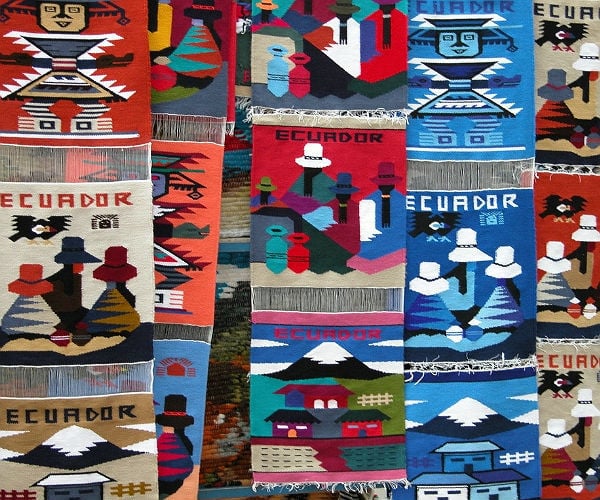 Otavalo is the cultural capital of Ecuador due to its rich history and tradition. The fabrics and handcrafts created in Otavalo are renowned for quality beauty. This small village has the biggest indigenous market in South America, called Plaza de Ponchos. In this market, for decades, many artisans and artists come to offer their products, so it is easy to find the Paja Toquilla hats or Panama hats weaved in Cuenca, the ceramics of Cotacachi, the leather clothes from La Esperanza, and the handicrafts from the surrounding areas of Otavalo.
There is much more than the Plaza de Ponchos in Otavalo such as the San Pablo Lake, the Peguche waterfalls, and Condor´s Park. At San Pablo, the visitor can go kayaking, hike along the lake, take a boat ride, or even stay in one of the nearby lodges with the Imbabura volcano as a backdrop. In fact, during the Inti Raymi festivities for the Summer Solstice, the lake is where the cleaning rituals of the indigenous are practiced. The Peguche waterfall is 30 meters (98 ft) high that is ideal for relaxing or enjoying a pleasant swim in one of its nearby spring water pools. Condor´s Park is a rescue center for this endangered species and other predatory birds, in addition to a majestic 360 view.
Otavalo is the cultural capital of Ecuador due to its rich history and tradition. The fabrics and handcrafts created in Otavalo are renowned for quality beauty. This small village has the biggest indigenous market in South America, called Plaza de Ponchos. In this market, for decades, many artisans and artists come to offer their products, so it is easy to find the Paja Toquilla hats or Panama hats weaved in Cuenca, the ceramics of Cotacachi, the leather clothes from La Esperanza, and the handicrafts from the surrounding areas of Otavalo.
There is much more than the Plaza de Ponchos in Otavalo such as the San Pablo Lake, the Peguche waterfalls, and Condor´s Park. At San Pablo, the visitor can go kayaking, hike along the lake, take a boat ride, or even stay in one of the nearby lodges with the Imbabura volcano as a backdrop. In fact, during the Inti Raymi festivities for the Summer Solstice, the lake is where the cleaning rituals of the indigenous are practiced. The Peguche waterfall is 30 meters (98 ft) high that is ideal for relaxing or enjoying a pleasant swim in one of its nearby spring water pools. Condor´s Park is a rescue center for this endangered species and other predatory birds, in addition to a majestic 360 view.
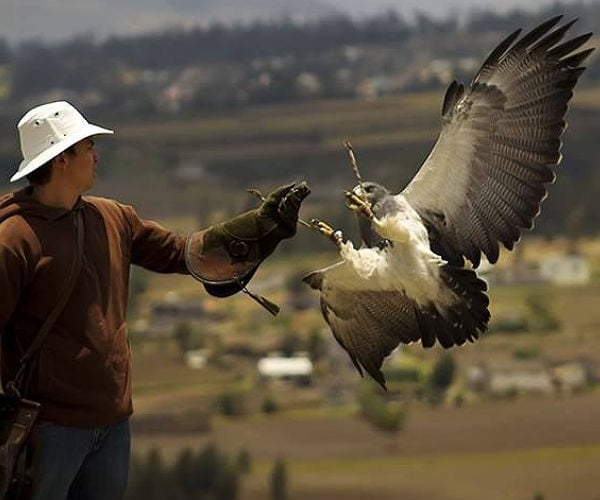 Without a doubt, Otavalo has a lot of potential for travelers that want to experience culture, nature, and adventure during their visit to Ecuador, and the best is that is only a few hours by car from the capital city of Quito.
2. Quitsato – Solar Clock
As many people know, the name Ecuador comes from the Equator that divides the world into two hemispheres (North and South). That´s why many tourists come every year to visit the Middle of the World monument, and the Intiñan Park, where the GPS mark the 0°0”0´. However, a 52 meters (171 ft) diameter solar clock mark not only the hour but also the solstices and equinoxes of the year.
Without a doubt, Otavalo has a lot of potential for travelers that want to experience culture, nature, and adventure during their visit to Ecuador, and the best is that is only a few hours by car from the capital city of Quito.
2. Quitsato – Solar Clock
As many people know, the name Ecuador comes from the Equator that divides the world into two hemispheres (North and South). That´s why many tourists come every year to visit the Middle of the World monument, and the Intiñan Park, where the GPS mark the 0°0”0´. However, a 52 meters (171 ft) diameter solar clock mark not only the hour but also the solstices and equinoxes of the year.
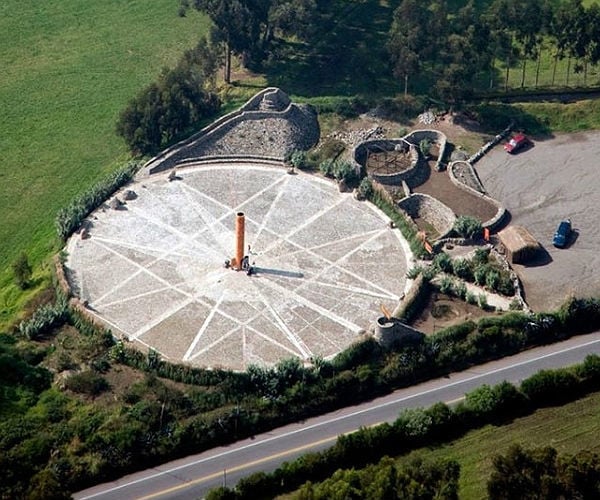 At Quitsato, the traveler can have a cultural experience mixed with knowledge of astronomy and ancient traditions that helped the indigenous ancestors to understand how everything works in the celestial calendar. Visitors will have an interpretation of educational programs Oriens and Quitsato.
At Quitsato, the traveler can have a cultural experience mixed with knowledge of astronomy and ancient traditions that helped the indigenous ancestors to understand how everything works in the celestial calendar. Visitors will have an interpretation of educational programs Oriens and Quitsato.
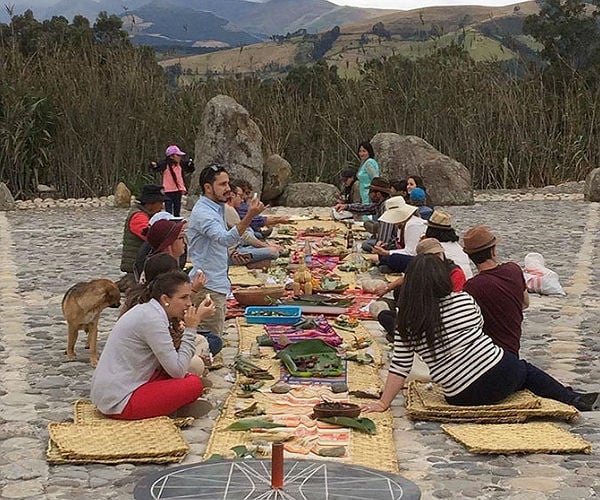 The Pachamanga, on the other hands, shows the traditional ways that natives prepared food in a volcanic stone under the earth. The meaning of Pacha is earth and Manga is pot. By cooking the food in this way, ancestors expressed its gratitude to the Pachamama (mother earth) for the food that was provided to them. The Pambamesa meal is served at floor level in order to feel the energy of mother earth which is a way to thank the Pachamama for the food. The meal is served in Atseras (leaves). Pambamesa looks forward to creating and sharing where “there is a real redistribution of wealth, equity and social equality.”
Quitsato is a mixture of knowledge, traditions, and energy connection with Pachamama or Mother Earth.
3. Quilotoa Crater
Quilotoa is a caldera formed after the eruption of a volcano that collapsed and subsequently filled the caldera with water. The crater has a diameter of 3 km (2 mi), and the caldera has accumulated water for centuries up to 250 m (820ft) deep.
The Pachamanga, on the other hands, shows the traditional ways that natives prepared food in a volcanic stone under the earth. The meaning of Pacha is earth and Manga is pot. By cooking the food in this way, ancestors expressed its gratitude to the Pachamama (mother earth) for the food that was provided to them. The Pambamesa meal is served at floor level in order to feel the energy of mother earth which is a way to thank the Pachamama for the food. The meal is served in Atseras (leaves). Pambamesa looks forward to creating and sharing where “there is a real redistribution of wealth, equity and social equality.”
Quitsato is a mixture of knowledge, traditions, and energy connection with Pachamama or Mother Earth.
3. Quilotoa Crater
Quilotoa is a caldera formed after the eruption of a volcano that collapsed and subsequently filled the caldera with water. The crater has a diameter of 3 km (2 mi), and the caldera has accumulated water for centuries up to 250 m (820ft) deep.
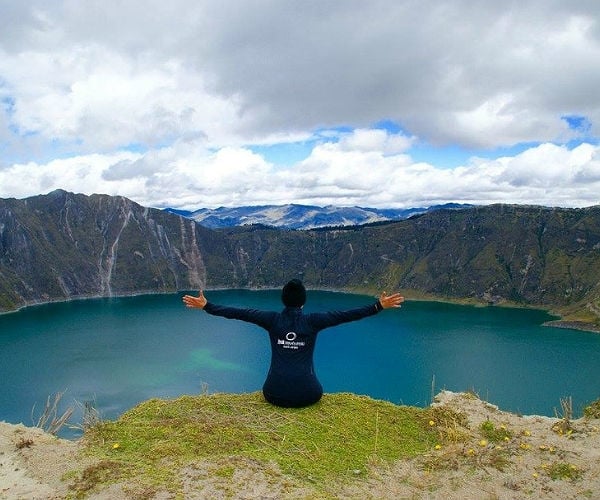 The Quilotoa crater has gained relevant importance for the visitors in recent years due to its beauty. Its water has turned in green due to the high concentration of minerals, and there are fumaroles at the lake floor with some hot springs on the eastern side of the volcano.
Visitors can go down the winding path until they reach the shores of the lake, where it is possible to go kayaking or make the trek from 3 to 5 hours for the entire diameter of the crater. There are also lookouts where people can admire the beauty of this volcanic lake.
For those passengers looking forward to staying close to the Quilotoa crater, there is a possibility to stay in some basic hostels or lodges. One of the most preferred by the tourists is Shalala Lodge because of the lookout offering views of the lake.
The Quilotoa crater has gained relevant importance for the visitors in recent years due to its beauty. Its water has turned in green due to the high concentration of minerals, and there are fumaroles at the lake floor with some hot springs on the eastern side of the volcano.
Visitors can go down the winding path until they reach the shores of the lake, where it is possible to go kayaking or make the trek from 3 to 5 hours for the entire diameter of the crater. There are also lookouts where people can admire the beauty of this volcanic lake.
For those passengers looking forward to staying close to the Quilotoa crater, there is a possibility to stay in some basic hostels or lodges. One of the most preferred by the tourists is Shalala Lodge because of the lookout offering views of the lake.
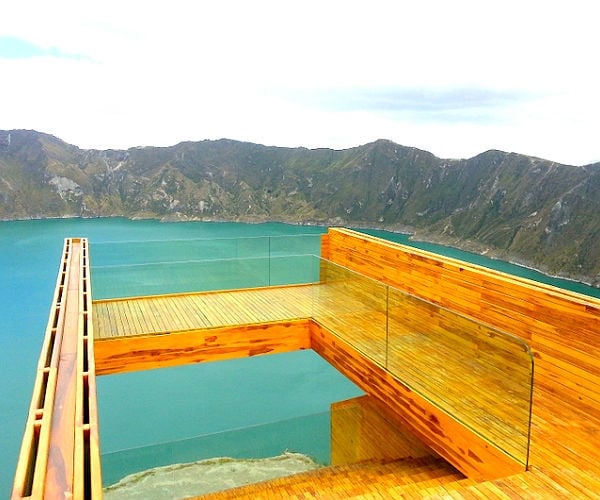 4. Chimborazo Volcano
The Chimborazo volcano is the highest volcano in Ecuador with 6263 m (20549.44 ft), and is currently inactive. 20 km away of the volcano, it is the city of Riobamba, which is the capital of the Chimborazo province.
4. Chimborazo Volcano
The Chimborazo volcano is the highest volcano in Ecuador with 6263 m (20549.44 ft), and is currently inactive. 20 km away of the volcano, it is the city of Riobamba, which is the capital of the Chimborazo province.
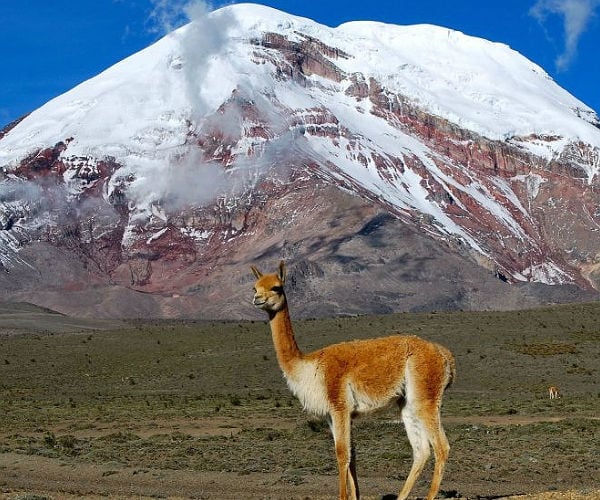 In this area, it is possible to stay in some of the traditional haciendas such as Hacienda Abraspungo or Hacienda la Andaluza. For those travelers looking forward to climbing at the Chimborazo volcano, the best option is the Chimborazo Lodge.
One of the ways to let the Chimborazo enchant travelers is by taking the train route of Tren del Hielo I, which departs from Riobamba to Urbina and La Moya. It is a day tour that is very worthwhile. There is a train route offered at the foothills of the volcano and visitors will have the opportunity to meet the last Ice Trader from the Chimborazo glacier.
Trading Ice from the glaciers of the volcanoes was a very common practice among locals which has been slowly disappearing in the last decades. Men used to climb up to the glaciers of the volcanoes to bring ice to the nearby cities, even as far as to the coastal area. Every Tuesday and Fridays these ice traders cut the pieces of ice from the glacier and transported by mule to the towns to sell it in the markets. People made ice cream (helados de paila) or cold juices with this pure ice. Nowadays, there is only one person remaining who proudly continues this tradition. His name is Baltazar Ushca, and the only way to meet him and learn about this unconventional and risky labor is by taking the Tren del Hielo I, that goes from Riobamba to La Urbina and La Moya. He is very excited to share his legacy with visitors coming on the train. Unfortunately, this legacy will probably die with him.
In this area, it is possible to stay in some of the traditional haciendas such as Hacienda Abraspungo or Hacienda la Andaluza. For those travelers looking forward to climbing at the Chimborazo volcano, the best option is the Chimborazo Lodge.
One of the ways to let the Chimborazo enchant travelers is by taking the train route of Tren del Hielo I, which departs from Riobamba to Urbina and La Moya. It is a day tour that is very worthwhile. There is a train route offered at the foothills of the volcano and visitors will have the opportunity to meet the last Ice Trader from the Chimborazo glacier.
Trading Ice from the glaciers of the volcanoes was a very common practice among locals which has been slowly disappearing in the last decades. Men used to climb up to the glaciers of the volcanoes to bring ice to the nearby cities, even as far as to the coastal area. Every Tuesday and Fridays these ice traders cut the pieces of ice from the glacier and transported by mule to the towns to sell it in the markets. People made ice cream (helados de paila) or cold juices with this pure ice. Nowadays, there is only one person remaining who proudly continues this tradition. His name is Baltazar Ushca, and the only way to meet him and learn about this unconventional and risky labor is by taking the Tren del Hielo I, that goes from Riobamba to La Urbina and La Moya. He is very excited to share his legacy with visitors coming on the train. Unfortunately, this legacy will probably die with him.
 In addition to the train route and the ice trader, Riobamba and the Chimborazo region offer visitors the biodiversity and breathtaking landscapes of the highlands of the Southern Andes. The Fauna Reserve of Chimborazo, which forms a protected ecosystem to preserve the habitat of the native wildlife of the Andes, such as the vicuña, the llama and the alpaca. In this reservoir, visitors can hike paths to enjoy the Andean natural sites.
5. Alausi – Devil’s Nose Train
Ecuador during the “age of steel” faced the challenge of building a railroad to connect the coast and port city of Guayaquil with the Andean capital. The most challenging section for the engineers was the path to the narrow mount Pistishi or Condor Puñuna which means where the condor sleeps. Here, the train tracks had to be built around walls of stone and big cliffs. Seen from above, the mountain looks like a nose, and the devil connotation comes from a large number of deaths suffered by the construction crews in this difficult project.
In addition to the train route and the ice trader, Riobamba and the Chimborazo region offer visitors the biodiversity and breathtaking landscapes of the highlands of the Southern Andes. The Fauna Reserve of Chimborazo, which forms a protected ecosystem to preserve the habitat of the native wildlife of the Andes, such as the vicuña, the llama and the alpaca. In this reservoir, visitors can hike paths to enjoy the Andean natural sites.
5. Alausi – Devil’s Nose Train
Ecuador during the “age of steel” faced the challenge of building a railroad to connect the coast and port city of Guayaquil with the Andean capital. The most challenging section for the engineers was the path to the narrow mount Pistishi or Condor Puñuna which means where the condor sleeps. Here, the train tracks had to be built around walls of stone and big cliffs. Seen from above, the mountain looks like a nose, and the devil connotation comes from a large number of deaths suffered by the construction crews in this difficult project.
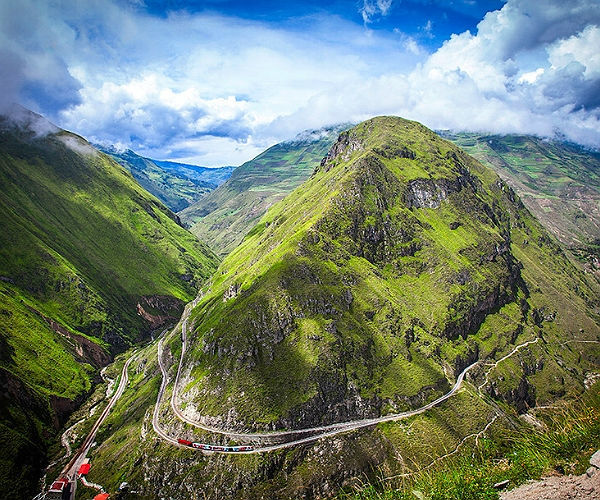 The train journey connecting the communities of Alausi and Sibambe, is approximately 12,5 km (7.77 mi) long where the train climbs the mountain approximately 500 m. The engineering feat comes in the narrow path where the train has many switchbacks to be able to climb the steep track. The zig-zag track enables the train to ascend and descend safely and provides a fun trip for guests.
Apart from the engineering wonder, and the tragic history behind the railroad, nowadays the series of train journeys are developing a sustainable tourism system based on authentic and meaningful experiences for visitors. This means that taking the Devil´s Nose day tour, passengers will be able to also connect with local people, learn about their culture and their traditions. Meanwhile, this activity offers locals a fair trade platform and the option for visitors to get a valuable souvenir that captures the soul of the Ecuadorian communities while supporting their economy and way of life.
The train journey connecting the communities of Alausi and Sibambe, is approximately 12,5 km (7.77 mi) long where the train climbs the mountain approximately 500 m. The engineering feat comes in the narrow path where the train has many switchbacks to be able to climb the steep track. The zig-zag track enables the train to ascend and descend safely and provides a fun trip for guests.
Apart from the engineering wonder, and the tragic history behind the railroad, nowadays the series of train journeys are developing a sustainable tourism system based on authentic and meaningful experiences for visitors. This means that taking the Devil´s Nose day tour, passengers will be able to also connect with local people, learn about their culture and their traditions. Meanwhile, this activity offers locals a fair trade platform and the option for visitors to get a valuable souvenir that captures the soul of the Ecuadorian communities while supporting their economy and way of life.
 6. Ingapirca – Inca ruins
Ingapirca in Quichua means “Wall of Inca” that was built approximately in the 16th century and is presumed to be an Inca´s observatory for the sun and the moon. The architecture is a mixture between the Inca and the Canaris; the first one didn´t use cement while the second uses this building material.
6. Ingapirca – Inca ruins
Ingapirca in Quichua means “Wall of Inca” that was built approximately in the 16th century and is presumed to be an Inca´s observatory for the sun and the moon. The architecture is a mixture between the Inca and the Canaris; the first one didn´t use cement while the second uses this building material.
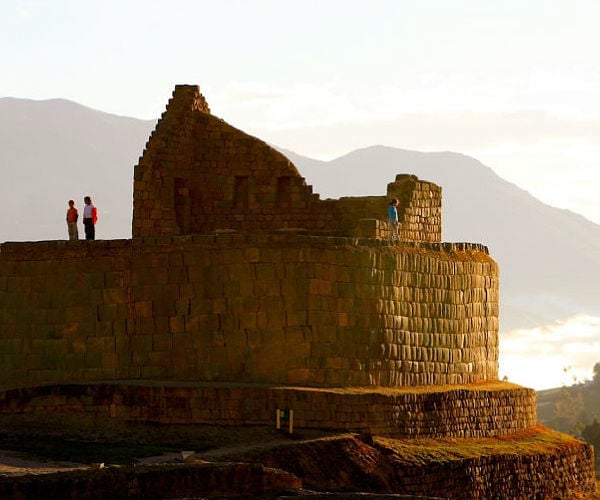 The Archeological complex of Ingapirca has 4 hectares, and it is the only Inca ruins within the Ecuadorian mainland, and represent the period of the Inca expansion during the Tahuantinsuyo. At that time, Ingapirca was equally powerful as Machu Picchu in Cuzco because both represent the power that Incas have in the region.
Ingapirca is 80 km (49.7 mi) away from Cuenca and offers to passengers the option to learn about the other side of the Inca Empire, the way that it also mixed with the Canari tribe, and the archeological treasures found in this sacred place. All of it surrounded by llamas, alpacas, and vicuñas at 3160 m.a.s.l, and cold weather due to the winds coming from the south side of the Andean highlands.
The Archeological complex of Ingapirca has 4 hectares, and it is the only Inca ruins within the Ecuadorian mainland, and represent the period of the Inca expansion during the Tahuantinsuyo. At that time, Ingapirca was equally powerful as Machu Picchu in Cuzco because both represent the power that Incas have in the region.
Ingapirca is 80 km (49.7 mi) away from Cuenca and offers to passengers the option to learn about the other side of the Inca Empire, the way that it also mixed with the Canari tribe, and the archeological treasures found in this sacred place. All of it surrounded by llamas, alpacas, and vicuñas at 3160 m.a.s.l, and cold weather due to the winds coming from the south side of the Andean highlands.
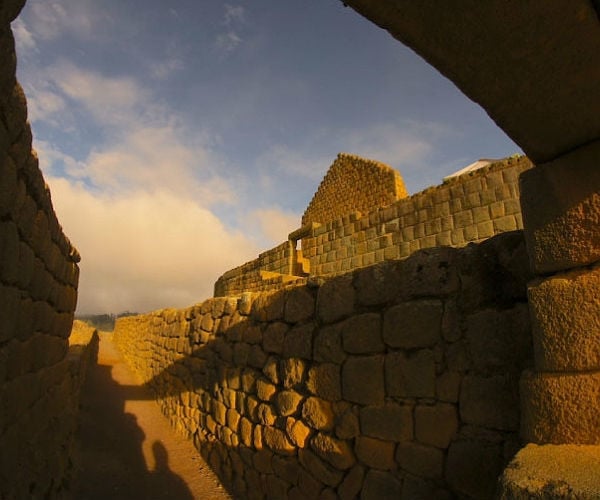 A curiosity of Ingapirca is that the fortress is aligned with the sun, every corner of the infrastructure is lighted by the sun, especially during the summer solstice (20-21 of June), which are the longest days of the year. Also, during the solstice, the Inti Raymi celebration takes place within the archeological complex with lots of colorful and shamanic rituals.
7. Cuenca – Cajas National Park
Cuenca is known as the “Athens of Ecuador” due to its beautiful architecture, cultural diversity and its contribution to the science, letters, and arts of Ecuador. It has the richest culture of the country and a historic city center that was also recognized by the UNESCO as a World Heritage City in 1999.
Staying in Cuenca is a must-do for worldwide travelers coming to Ecuador because they will gain another perspective about the Andean cities. One of the highlights to visit within the city is the Cathedral of the Immaculate Conception of Cuenca that is a Gothic-Renaissance style inspired by the San Peter Chapel in Rome. It was opened in 1985, after 100 years of construction.
A curiosity of Ingapirca is that the fortress is aligned with the sun, every corner of the infrastructure is lighted by the sun, especially during the summer solstice (20-21 of June), which are the longest days of the year. Also, during the solstice, the Inti Raymi celebration takes place within the archeological complex with lots of colorful and shamanic rituals.
7. Cuenca – Cajas National Park
Cuenca is known as the “Athens of Ecuador” due to its beautiful architecture, cultural diversity and its contribution to the science, letters, and arts of Ecuador. It has the richest culture of the country and a historic city center that was also recognized by the UNESCO as a World Heritage City in 1999.
Staying in Cuenca is a must-do for worldwide travelers coming to Ecuador because they will gain another perspective about the Andean cities. One of the highlights to visit within the city is the Cathedral of the Immaculate Conception of Cuenca that is a Gothic-Renaissance style inspired by the San Peter Chapel in Rome. It was opened in 1985, after 100 years of construction.
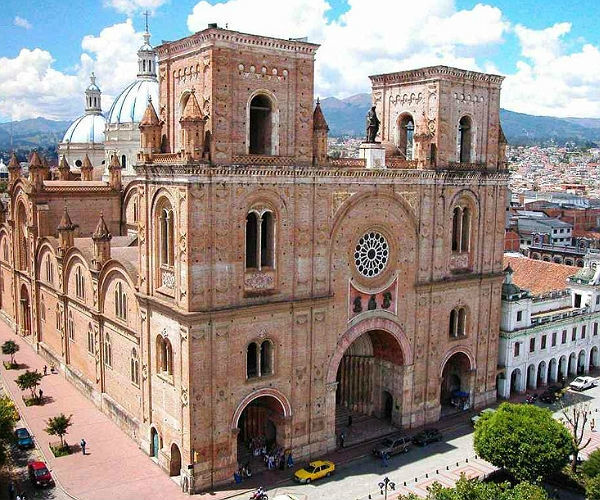 In addition to the historic city center, Cuenca offers many attractions to visit, and places to discover in its surroundings. For example, there are almost 20 museums within the city such as the Municipal Museum of Modern Art Cuenca´s Bienal. The Zoo and Biopark Amaru are ideal for those people looking for nature. Nearby towns, Chordeleg, and Gualaceo offer the option to visit jewelry workshops as well as textile production and the experience Ecuadorian gastronomy.
Another highlight of this southern Andes area is the Cajas National Park, 33 km (20 mi) away from Cuenca. In this natural reservoir, travelers can enjoy the Andean nature and biodiversity along the walking paths. Also, it is possible to visit the Lagartococha Lake where you can participate in sports fishing. The Avilahuayco that has a breathtaking lookout for viewing the vast national park. Cajas offers a great variety of orchids, ferns, and mosses as well as wildlife such as the curiquinga, a large black and white raptor, and the largest hummingbird of the world, the giant hummingbird (Patagona gigas), which eat only agave flowers. The Violet-throated metaltail is endemic to Cajas and surrounding valleys.
In addition to the historic city center, Cuenca offers many attractions to visit, and places to discover in its surroundings. For example, there are almost 20 museums within the city such as the Municipal Museum of Modern Art Cuenca´s Bienal. The Zoo and Biopark Amaru are ideal for those people looking for nature. Nearby towns, Chordeleg, and Gualaceo offer the option to visit jewelry workshops as well as textile production and the experience Ecuadorian gastronomy.
Another highlight of this southern Andes area is the Cajas National Park, 33 km (20 mi) away from Cuenca. In this natural reservoir, travelers can enjoy the Andean nature and biodiversity along the walking paths. Also, it is possible to visit the Lagartococha Lake where you can participate in sports fishing. The Avilahuayco that has a breathtaking lookout for viewing the vast national park. Cajas offers a great variety of orchids, ferns, and mosses as well as wildlife such as the curiquinga, a large black and white raptor, and the largest hummingbird of the world, the giant hummingbird (Patagona gigas), which eat only agave flowers. The Violet-throated metaltail is endemic to Cajas and surrounding valleys.
 8. Guayaquil
The Pearl of the Pacific is one of the other names of Guayaquil, the biggest city and “economic capital” of Ecuador due to its port. Apart from the economic and cosmopolitan lifestyle of this port city, there is a lot of history from the colonial period.
8. Guayaquil
The Pearl of the Pacific is one of the other names of Guayaquil, the biggest city and “economic capital” of Ecuador due to its port. Apart from the economic and cosmopolitan lifestyle of this port city, there is a lot of history from the colonial period.
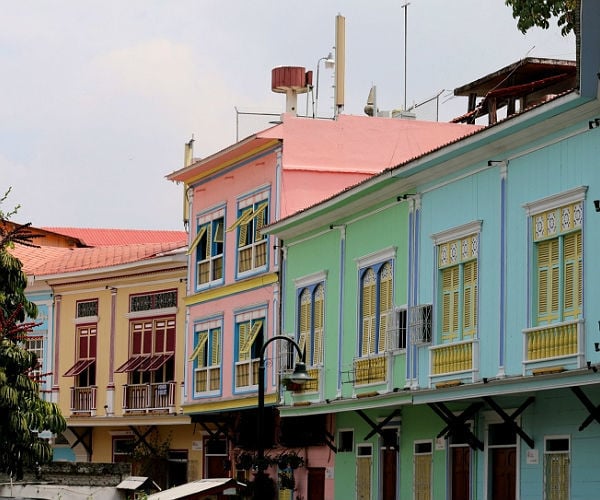 Guayaquil was founded in 1547 as a shipyard and port that served to the Spanish crown back then. Its first neighborhood is Las Peñas (the cliffs) named in that way due to all the cliffs at the foothill of the Santa Ana Hill. Nowadays, Las Peñas is one of the most colorful, traditional, and historic parish of Guayaquil, with an architecture predominantly Colonial and Republican that reflects the wealthy period that Ecuador lived during the boom time of the Cocoa industry in the 1920s.
The Parque Histórico of Guayaquil (Historic Park) is another highlight of this city that travelers can enjoy. At this park where many republican and historic buildings were built, people can visit the three attractions of the park. Wildlife area, Urban Architecture area, and Traditional area.
In the wildlife area of about 4 ha, it is possible to view some of the animal species in their natural habitats such as parrots, the endangered species harpy eagle, toucan of the coast, or the Maria and Masked Ducks.
At the Urban Architecture area, travelers can see a selection of different types of Republican Mansions that were iconic and very important at the beginnings of the 20th century, representing the wealthy period of the city and Ecuador. Nowadays, after the opening of Hotel del Parque, a luxury boutique hotel in the middle of the historic park, passengers can experience the opulence and way of life common in the past in this city.
Guayaquil was founded in 1547 as a shipyard and port that served to the Spanish crown back then. Its first neighborhood is Las Peñas (the cliffs) named in that way due to all the cliffs at the foothill of the Santa Ana Hill. Nowadays, Las Peñas is one of the most colorful, traditional, and historic parish of Guayaquil, with an architecture predominantly Colonial and Republican that reflects the wealthy period that Ecuador lived during the boom time of the Cocoa industry in the 1920s.
The Parque Histórico of Guayaquil (Historic Park) is another highlight of this city that travelers can enjoy. At this park where many republican and historic buildings were built, people can visit the three attractions of the park. Wildlife area, Urban Architecture area, and Traditional area.
In the wildlife area of about 4 ha, it is possible to view some of the animal species in their natural habitats such as parrots, the endangered species harpy eagle, toucan of the coast, or the Maria and Masked Ducks.
At the Urban Architecture area, travelers can see a selection of different types of Republican Mansions that were iconic and very important at the beginnings of the 20th century, representing the wealthy period of the city and Ecuador. Nowadays, after the opening of Hotel del Parque, a luxury boutique hotel in the middle of the historic park, passengers can experience the opulence and way of life common in the past in this city.
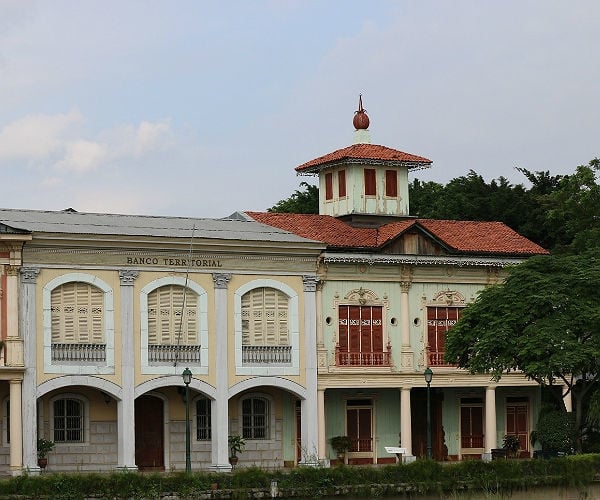 On the other hand, the Traditional area with 2 ha offers the option to those tourists to visit a Cocoa Farm that is part of the park. In here, the aim is to learn about the factory process of the cocoa as well as the way that landlords and farmworkers lived at San Juan during the period of the “Pepa de Oro” (cocoa).
Finally, at Guayaquil, there is also the option of visiting the Malecon 2000 along the Guayas River and either visit the Muscovite wheel called La Perla and having a spectacular view of the city.
Eight sites from the Andes to the Pacific Coast, are some of the highlights that can offer a unique experience to worldwide travelers. There are many more sites and activities that Ecuador has to offer in the mainland and it can depend on the interest of each visitor. In this article, the aim was to wake up the curiosity, and showing part of the adventures, experiences, and travel tips that can be considered during the travel planning to visit Ecuador.
Marcel Perkins is CEO at Latin Trails. Latin Trails is an incoming destination management company specialized in bespoke tours, with a focus on offering unique experiences throughout Ecuador, the Galapagos Islands, and Peru.
If you would like to be a guest blogger on A Luxury Travel Blog in order to raise your profile, please contact us.
On the other hand, the Traditional area with 2 ha offers the option to those tourists to visit a Cocoa Farm that is part of the park. In here, the aim is to learn about the factory process of the cocoa as well as the way that landlords and farmworkers lived at San Juan during the period of the “Pepa de Oro” (cocoa).
Finally, at Guayaquil, there is also the option of visiting the Malecon 2000 along the Guayas River and either visit the Muscovite wheel called La Perla and having a spectacular view of the city.
Eight sites from the Andes to the Pacific Coast, are some of the highlights that can offer a unique experience to worldwide travelers. There are many more sites and activities that Ecuador has to offer in the mainland and it can depend on the interest of each visitor. In this article, the aim was to wake up the curiosity, and showing part of the adventures, experiences, and travel tips that can be considered during the travel planning to visit Ecuador.
Marcel Perkins is CEO at Latin Trails. Latin Trails is an incoming destination management company specialized in bespoke tours, with a focus on offering unique experiences throughout Ecuador, the Galapagos Islands, and Peru.
If you would like to be a guest blogger on A Luxury Travel Blog in order to raise your profile, please contact us.Did you enjoy this article?
Receive similar content direct to your inbox.


This makes for a great read. I knew very little about Ecuador. My wife is a Physicist and she would be fascinated by the solar clock, I can see her taking many photos there. She would also adore the Plaza de Ponchos too. She loves handicrafts and would be impressed by the vivid colours of the locals work. This piece is a great advert for the diversity of Ecuador, I had always just thought of it as the launching pad for the Galápagos Islands.
Hi Rogers,
You should come with your wife. You´ll find why Ecuador is so special.
There are so many things to do and experience in this small country besides the Galapagos Islands.
Marcel!
Wow! From the picture I can see why Cuenca is nick-named the Athens Of Ecuador and way it deserved early recognition as a World Heritage city. With 20 museums and as a base for going off and exploring the Andes it would have to be part of my Ecuador travels. Obviously without the crumbling age of Athens it looks in very good shape too.
Hi Diana,
Cuenca is so beautiful, not in vain many expats have chosen this Andean city as their new home after their retirement.
Cuenca also has been awarded twice as South American Leading City Break Destination by the World Travel Awards.
Marcel!
I always try to make a train journey part of my travel plans. The Tren del Hielo sounds like a really spectacular trip to add to my collection of “Great Rail Journeys of the World.”
Though it would be sad if Baltazar Ulloa is really the last of the Ice Traders. I believe that we need to make great efforts to preserve our heritage.
Surely more could be made of the Ice he supplies? Travellers love stories and would like to taste the ice drinks. I don’t know what the tourism infrastructure is like in the region but would it be possible to levy a small tourist tax to fund a couple of Ice Trader apprenticeships?
I admit that Ice Tradng needs to move with the times and the apprentices would probably need to be adept at marketing too but it would be tragic if the world lost this valuable part of its heritage. I would certainly be willing to pay a small charge to help preserve the region’s identity.
There’s a great story to be told on Ulloa. It would make a great feature in something like National Geographic. Is there any film of him at work? Someone could make a great documentary on “The Last Of the Ice Traders.” Maybe it could spark some support for the sort of apprenticeships that you are talking about.
Hi Carolyn and Pete,
You´re so right about the importance of Baltazar. There is a short documentary about him and his labor. You can find it here https://cortosdemetraje.com/el-ultimo-hielero/
He was also awarded an Honoris Causa Doctorate from the Instituto Mexicano de Lideres de Excelencia, last Nov 13th, 2018.
Inspirational. Me and my camera could spend a few weeks happily bumbling round Ecuador. Very excited about the Quilotoa Crater and it’s green water and bubbling hot springs.
Hi Nick,
Quilotoa is breathtaking, and also it’s marvelous when you see it on top, and then walk down to the foothill and then take a kayak riding along the lake.
Marcel!
For me a visit to the Archeological complex of Ingapirca is a must. I’ve got a real fascination to learn more about the Incas.
It is very difficult to piece together what their lives were like. Firstly, the Spanish Inquisition destroyed anything that was not mainstream Catholicism and of course indigenous populations had no resistance to the diseases imported by Europeans, so there were simply less people around to hand down oral traditions. Also time and weathering have taken their toll.
Very gradually you have to piece together fragments of evidence from all those centuries ago.
Hi Liz,
It is a very important archeological site. It is the representation of the Incas when they expand decided to expand their empire.
Come and visit it!
Marcel!
I never imagined Ecuador to be this beautiful. If I ever get the chance to travel the country, I will surely not miss the opportunity to visit the Solar Clock in Quitsato. Who wouldn’t want to know where the North meets the South, right? This sounds so intriguing and fascinating to me. I also wish to be given the chance to meet the ice trader, Baltazar Ushca. I hope the government will try its best to groom the next generation to continue his tradition.
Definitely a place to enjoy culture and meet unique people. If you would like to meet Baltazar, you can take the cruise train from Quito to Guayaquil or viceversa.
His offspring do participate in the trade of ice, but it is hard to keep this tradition.
There’s definitely a lot of culture and history to explore in Ecuador. It would be fascinating to see the solar clock and learn more about astronomy, the solictices, the ancient traditions. Experiencing the Pachamanga would be equally eye opening and a great way to learn and to get a more culturally enriching experience. The Devil’s Nose Train would be a must to check out. It’s an incredibly impressive project, though very sad with how many died during construction. I wonder how long it takes to travel the distance between Alausi and Sibambe? I’d also want the Inca ruins on my list as I love exploring things like that.
You can take on your bucket list in a few days!
The journey between Alausi and Sibambe is only over an hour. From the end of the train ride to Ingapirca it is roughly 3 hours.